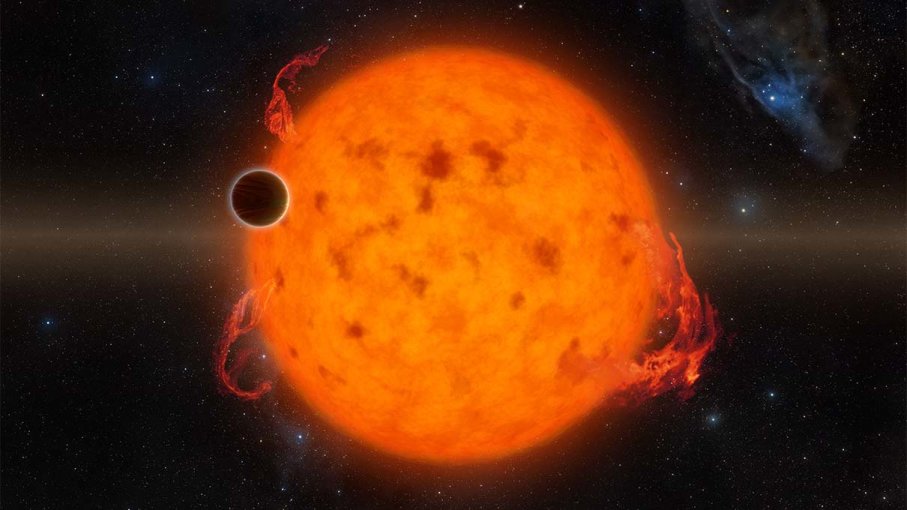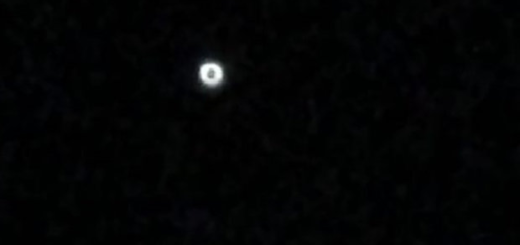NASA’s Kepler Mission Adds 100 Alien Worlds to Exoplanet Tally

An exoplanet orbits in front of its star. The first exoplanets were detected in the 1990s. It has since become evident that planets around other stars are common and there are likely hundreds of billions of exoplanets in the Milky Way alone. NASA/JPL-CALTECH
Astronomers analyzing data collected by NASA’s Kepler Space Telescope have announced the discovery of nearly 100 alien worlds beyond our solar system and one of them is an exoplanet with a 10-day orbit that whips around the brightest star recorded in Kepler’s database. This latest haul brings the number of exoplanets discovered by Kepler’s extended mission to almost 300.
Launched in 2009, the space telescope stared unblinkingly at one small patch of sky near the constellation of Cygnus (The Swan). This field of view contained more than 145,000 main-sequence stars and, using its extremely sensitive optics, Kepler would detect tiny periodic dips in brightness in some of those stars. After analysis, thousands of these dips were determined to be worlds orbiting in front of their star, blocking a small amount of light — events known as “transits.”
This method of detecting exoplanets elsewhere in our galaxy has proven to be very effective. During Kepler’s primary mission, more than 2,300 worlds have been confirmed and more have yet to be found in the vast quantities of recorded observations.
Overcoming Adversity
In 2013, however, the Kepler mission was dealt a paralyzing blow: A second reaction wheel (a gyrostabilizer) on the spacecraft failed, meaning it was unable to keep a steady eye on its field of stars. Although scientists had collected enough data to keep them busy for years, they faced the possibility that the mission was lost. But, through an ingenious use of the remaining operational reaction wheels and using the slight pressure from the light of the sun, mission scientists were able to keep the mission going, not to stare at the same patch of sky, but to take in a sweeping view from its orbital plane as the space telescope orbited the sun. This new phase of Kepler’s odyssey was named “K2” and it continues to produce a steady flow of new exoplanetary discoveries, including dozens in this latest study.
“We started out analyzing 275 candidates of which 149 were validated as real exoplanets. In turn 95 of these planets have proved to be new discoveries,” said Andrew Mayo, a Ph.D. student who carried out the research at the National Space Institute (DTU Space) at the Technical University of Denmark. “This research has been underway since the first K2 data release in 2014.
“We found that some of the signals were caused by multiple star systems or noise from the spacecraft. But we also detected planets that range from sub-Earth-sized to the size of Jupiter and larger,” he added in a statement. Mayo is lead author of an international study published Feb. 14, 2018, in the Astrophysical Journal.
Beyond the Hunt for Habitable Worlds
One of Kepler’s key strengths is to seek out small habitable exoplanets that may share similar qualities to Earth. Orbiting within our star’s habitable zone, our planet receives just the right amount of solar energy to maintain water in a liquid state on the surface. Liquid water, as we know, is necessary for life to function and evolve, so seeking out other rocky Earth-sized worlds orbiting inside their stars’ habitable zones is a compelling quest for astronomers. So far, Kepler has confirmed 30 such worlds and more are expected to be found.
Although we are a long way from understanding whether any of these worlds possess the right ingredients for extraterrestrial biology (i.e. whether these worlds have atmospheres or even if they possess liquid water), Kepler is providing an insight into just how common small habitable zone exoplanets are. Future observatories — such as NASA’s James Webb Space Telescope, the Transiting Exoplanet Survey Satellite (TESS), and ground-based observatories like the Giant Magellan Telescope (GMT) and Extremely Large Telescope (ELT) — will use Kepler’s discoveries as a foundation for hunting down potential biosignatures on these worlds.
But Kepler’s discoveries go beyond looking for potentially habitable worlds. It has revealed a stunning diversity of exoplanets, many of which have very little in common with the planets in our solar system.
Once notable discovery in this most recent batch of new K2 worlds is one that orbits a very bright star.
“We validated a planet on a 10-day orbit around a star called HD 212657, which is now the brightest star found by either the Kepler or K2 missions to host a validated planet. Planets around bright stars are important because astronomers can learn a lot about them from ground-based observatories,” said Mayo.
“Exoplanets are a very exciting field of space science. As more planets are discovered, astronomers will develop a much better picture of the nature of exoplanets which in turn will allow us to place our own solar system into a galactic context,” he added.



 Creators of mankind
Creators of mankind Description of “Tall white aliens”
Description of “Tall white aliens” Where they came from?
Where they came from? About hostile civilizations
About hostile civilizations The war for the Earth
The war for the Earth “Tall white aliens” about eternal life
“Tall white aliens” about eternal life Video: “Nordic aliens”
Video: “Nordic aliens” Aliens
Aliens Alien encounters
Alien encounters The aliens base
The aliens base UFO
UFO Technology UFO
Technology UFO Underground civilization
Underground civilization Ancient alien artifacts
Ancient alien artifacts Military and UFO
Military and UFO Mysteries and hypotheses
Mysteries and hypotheses Scientific facts
Scientific facts


















